Advertisements
What is the extent and course of oesophagus ?
Oesophagus is a muscular tube that conveys food from the pharynx to the stomach.
- Extent of oesophagus:
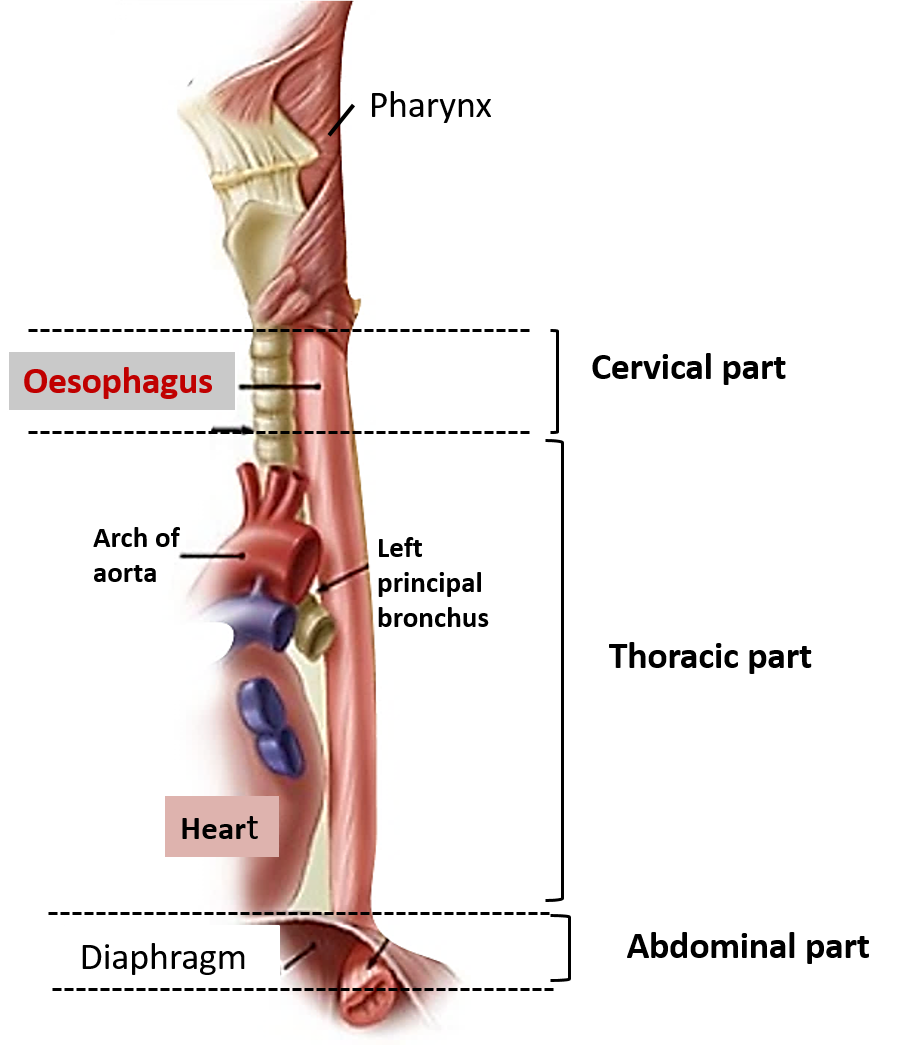
- it begins as continuation of pharynx in the neck at the lower border of the cricoid cartilage ( at the level of C6 vertebra) to the cardiac end of the stomach in the abdomen (opposite T11 vertebra)
- Is 10 inches ( 25cm) long.
- Is divided into three parts i.e. cervical, thoracic and abdominal.
- Course of oesophagus:
- Cervical part (4cm): descends behind the trachea and in front of the bodies of the cervical vertebrae.
- Thoracic part (20 cm): passes down through the superior and posterior mediastinum in from of thoracic vertebrae. It lies behind the trachea in superior mediastinum and from the bifurcation of trachea onwards, it passes behind the right pulmonary artery. left principal bronchus and left atrium ( in the posterior mediastinum).
- Abdominal part (1-2cm): enters the abdomen by passing through the opening in the diaphragm (at the level of T10 vertebral level. After a short course in the abdomen ( 2cm) opens in the cardiac end of stomach.
Enumerate the sites of constrictions of esophagus.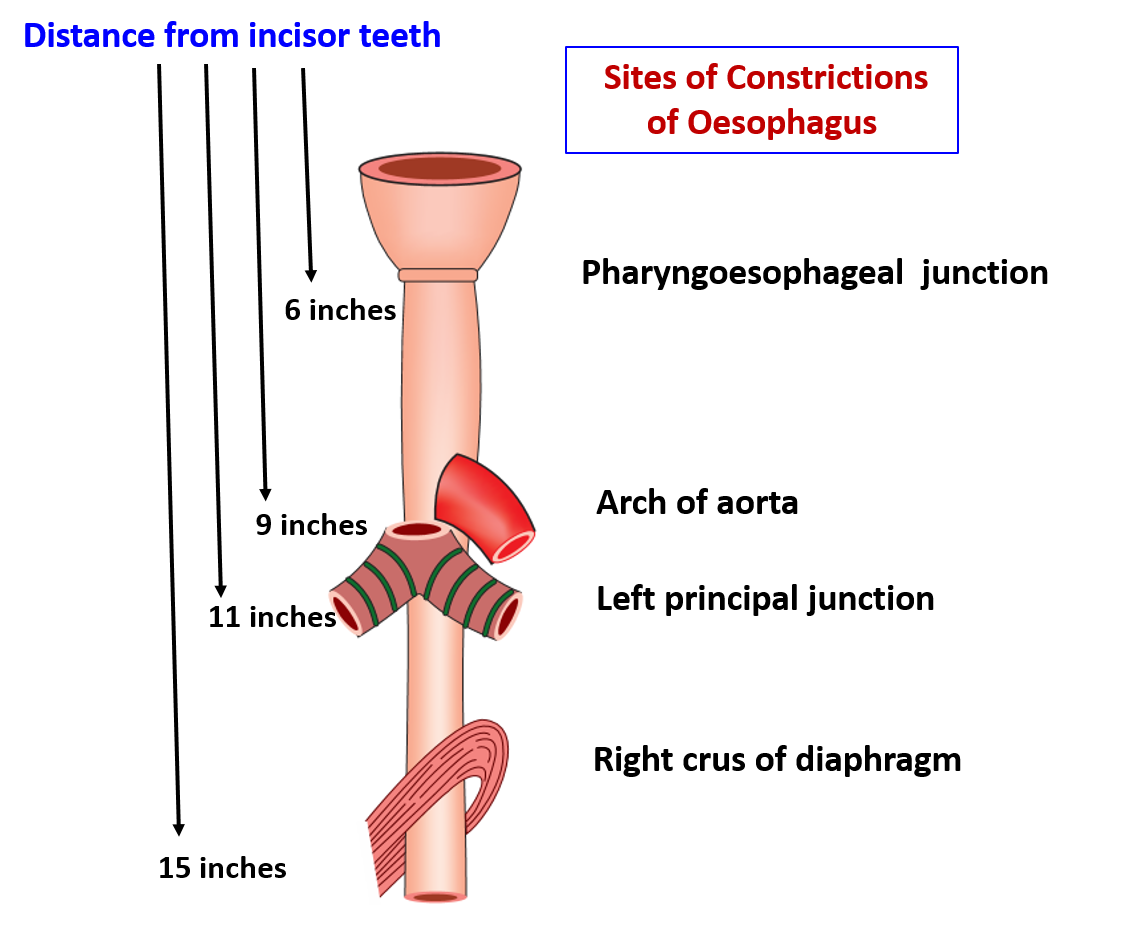
- Oesophagus has four constrictions:
- 1st constriction : at the beginning of oesophagus, at the level of C6 vertebra (15 cms/ 6 inches from incisor teeth ). This is the narrowest part of oesophagus.
- 2nd constriction : where the arch of aorta crosses it, at the level of T3 vertebra ( 22.5 cms/9 inches from incisor teeth)
- 3rd constriction : where the left bronchus crosses it , at the level of T6 vertebra ( 27.5 cms/11 inches from incisor teeth )
- 4th constriction : where it passes through the diaphragm, at the level of T10 vertebra ( 40 cm/15 inches from incisor teeth)
Name the arteries that supply oesophagus.
Arterial that supply oesophagus are:
- Cervical part of oesophagus: oesophageal branches of inferior thyroid artery.
- Thoracic part of oesophagus : oesophageal branches of descending thoracic aorta and bronchial arteries.
- Abdominal part of oesophagus : oesophageal branches of left gastric and left inferior phrenic arteries.
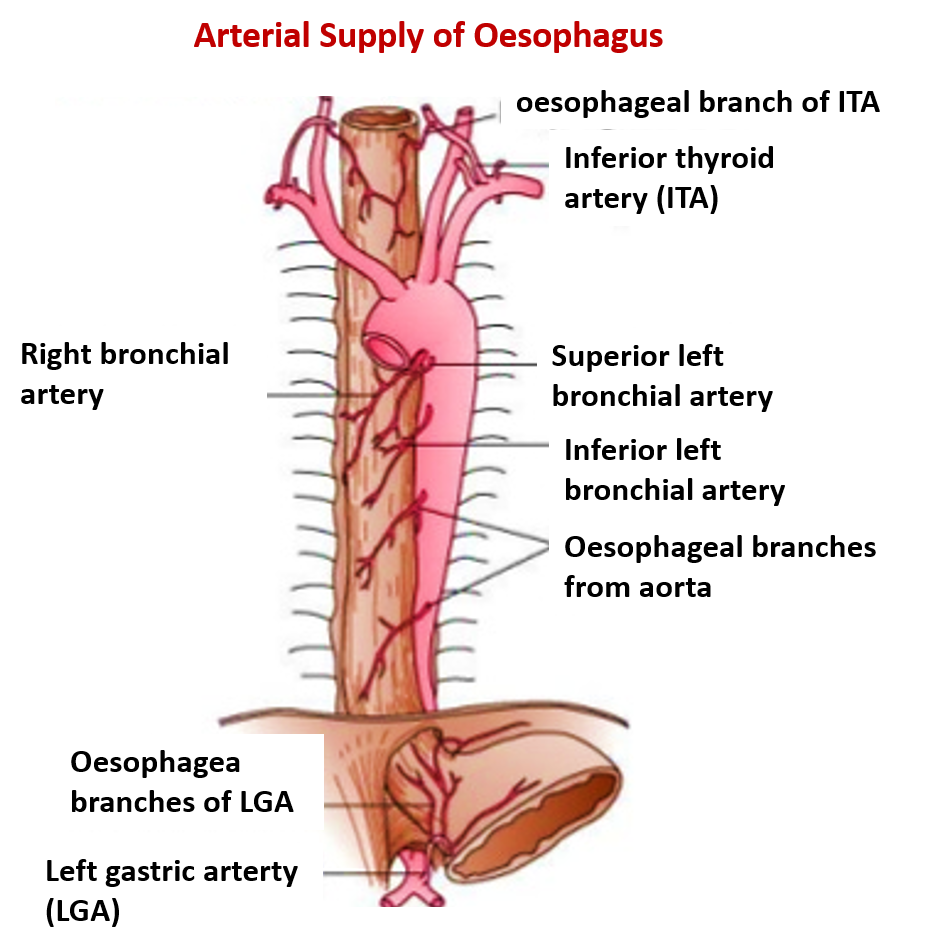
Name the veins into which the oesophageal veins drain.
Venous drainage of oesophagus:
- Cervical part: into inferior thyroid veins
- Thoracic part : into azygous and hemiazygous veins
- Abdominal part : into hemiazygous vein (tributary of inferior vena cava) & into left gastic vein ( tributary of portal vein)
*Abdominal part of oesophagus is one of the sites portocaval anastomosis.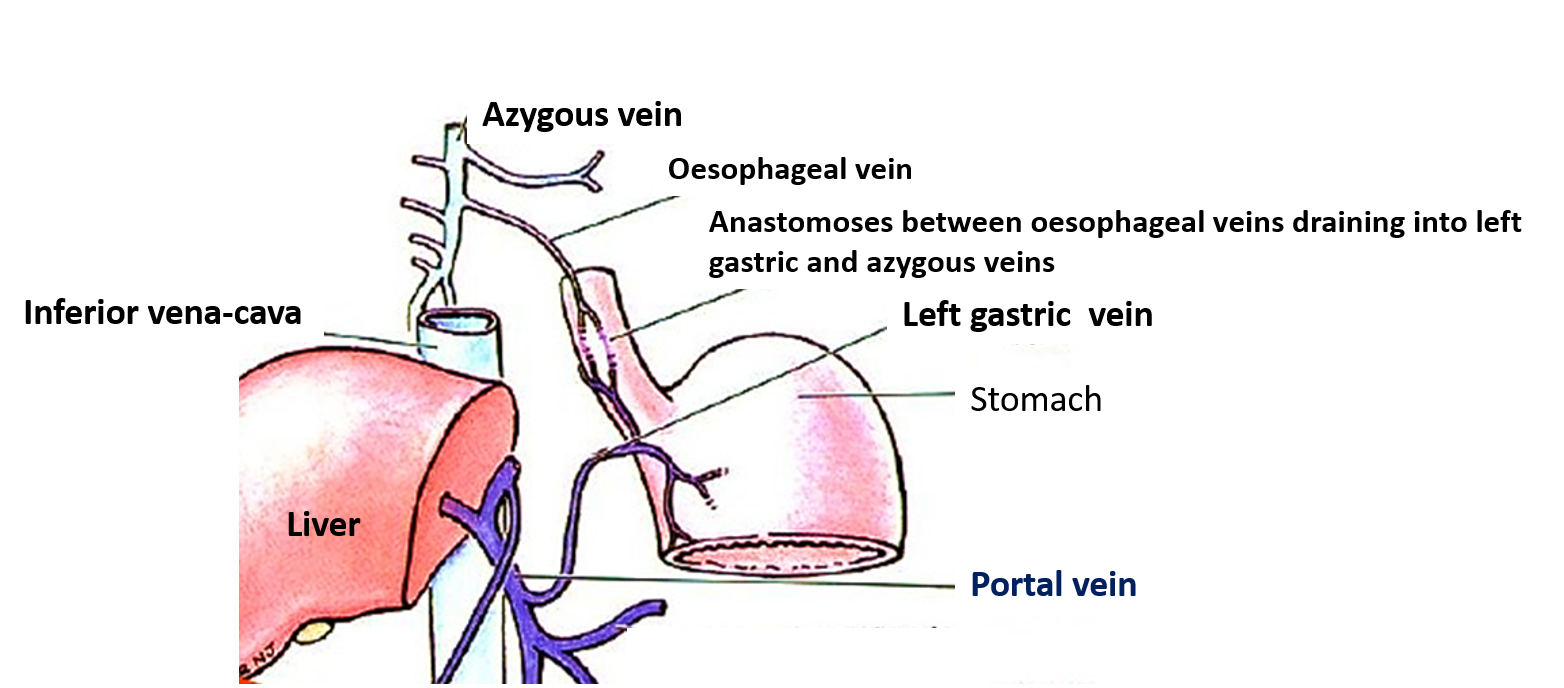
Enumerate the lymph nodes into which lymphatic drainage of oesophagus occurs.
Lymphatic drainage of oesophagus:
- Cervical part : into deep cervical nodes
- Thoracic part : into posterior mediastinal nodes draining into supraclavicular nodes
- Abdominal part : into left gastric nodes
*Hard fixed supraclavicular nodes may be palpated in patients with advanced oesophageal cancer.
Applied Aspects
Oesophageal varices
- Are the dilated submucosal veins in the lower esophagus.
- Occur as a consequence of portal hypertension.
- Lower end of oesophagus is one of the sites of portocaval anastomosis. There is anastomoses between the oesophageal veins that drain above into azygous vein (drains into superior vena cava) and below into left gastric vein(a tributary of portal vein). In situations where portal pressure increases, such as cirrhosis of liver, the blood flow is redirected from the liver into areas with portocaval anastomosis. The collateral channels of portocaval anastomosis open up, become dilated and tortuous to form oesophageal varices which may rupure to cause hematemesis (vomiting of blood ).
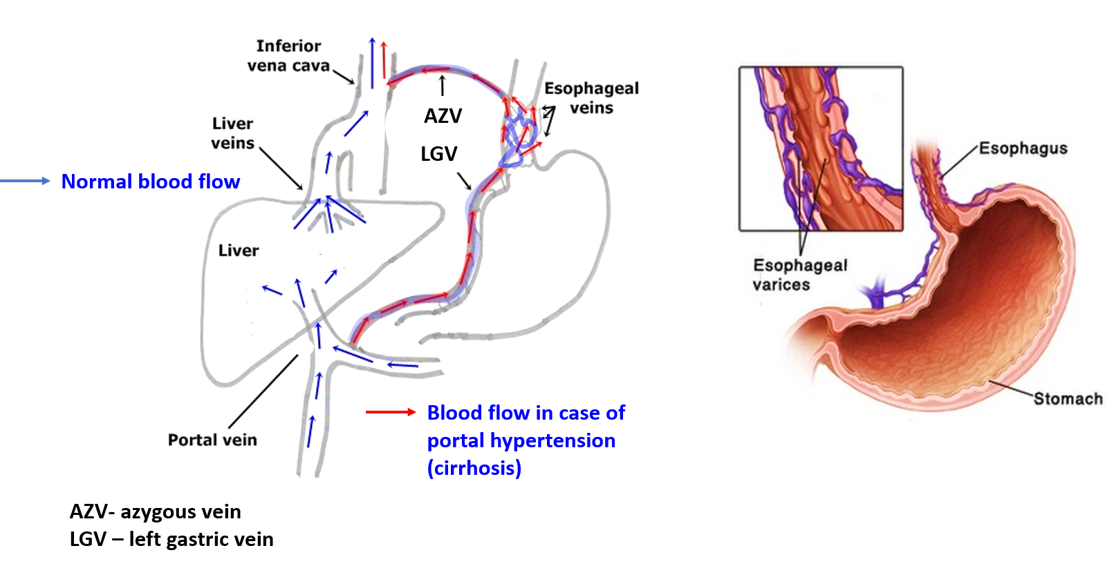 Achalasia cardia
Achalasia cardia
It occurs due to spsm of sphincter/ inability of the lower esophageal sphincter smooth muscles to relax. It causes dysphagia i.e. inability to swallow. Barium swallow shows Bird’s beak appearance.
Knowledge of the constrictions of oesophagus is important
Knowledge of the constrictions of oesophagus is important for the following reasons:
- To ensure safe passage of Ryle’s tube which is inserted in stomach for gastric analysis and gastric feeding.
- These are the sites where the swallowed foreign bodies are most likely to become impacted.
- Strictures may occur after swallowing corrosive fluids.

Very resourceful content. I appreciate for this. Thanks and May God bless you 🙏
Nice content on thorax..but please add mediastinum
It’s also an important topic under thorax